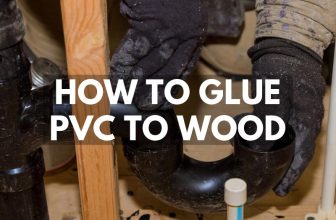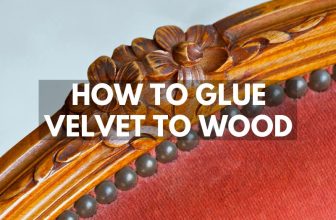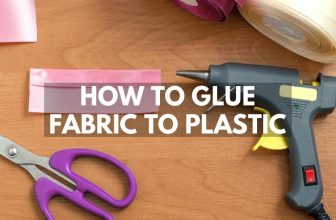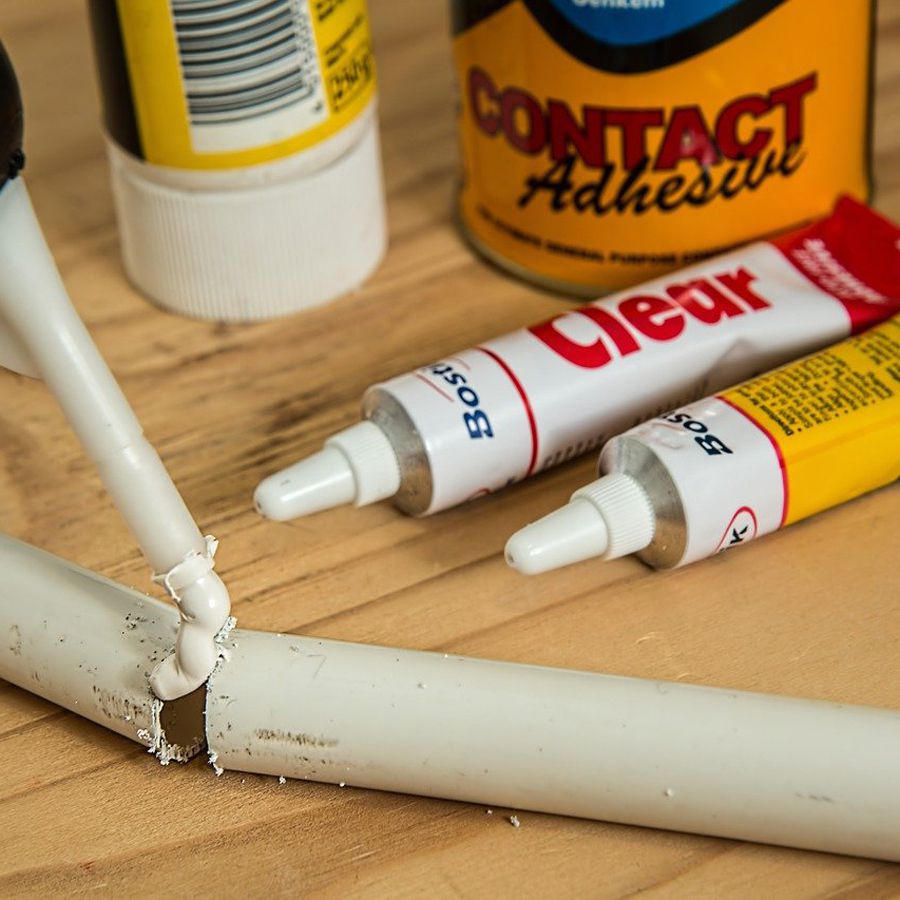
How many types of glue are there?
There are 9 types of glue that form the foundation of all the different adhesives available today – Epoxy, polyurethane, cyanoacrylate, polyvinyl acetate, silicone, rubber cement, solvent cement, UV adhesive and spray adhesives. They are all multipurpose and provide different benefits that make them suitable for solving more specific problems.
In this guide to the different types of glue, I will be looking at 9 of the most common adhesives and explaining their individual properties. I wanted to know how each of them works and what kinds of materials and surfaces they will adhere to. What I found may surprise you.
Guide to the Different Glue Types
Epoxy Resin
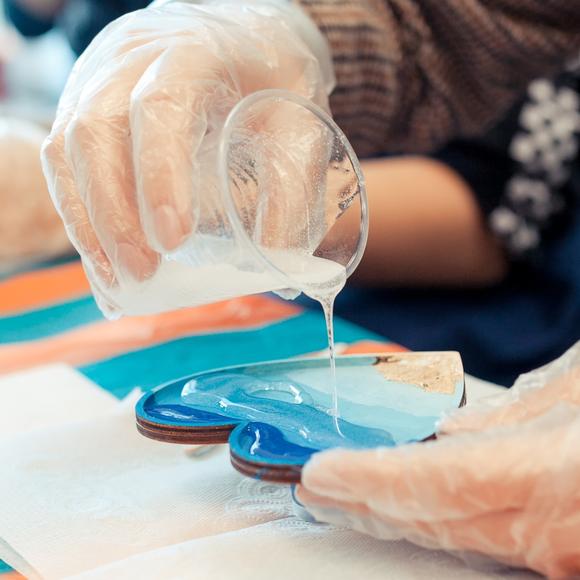
What is Epoxy Resin?
Epoxy resin is a two-part glue that requires equal measures of resin and hardener to be mixed together to activate its adhesive properties. Epoxy glue is suitable for household repairs, DIY projects, outdoor fixings, and bonding to almost anything, including metal.
Available in liquid or solid formats, you can choose different viscosities to suit your project. Supplied as a single unit containing both parts, they must be blended together in equal ratios to activate the putty or solution.
Why is epoxy in two parts? The reason epoxy resin is sold in two parts is to improve the shelf life from several hours to several years. When the resin and hardener are mixed together they start a chemical reaction which can last between 4-6 hours.
What can epoxy resin be used on? You can use Epoxy resin on metal, wood, plastic, ceramic, glass, tile, concrete, PVC, fiberglass, and lots of other materials. Avoid using epoxy resin on rubber, vinyl, acetate, plexiglass, and silicone for which there are better options.
- USES: Glass, wood, metal, ceramic, plastic, tile, aluminum, fabric, fiberglass, vinyl, leather, concrete, brick, granite, stone
- IDEAL FOR: Heavy fixings, strong joints, permanent repairs
- SET TIME: 4 – 6 hours
- CURE TIME: 24 – 72 hours
- TENSILE STRENGTH: 3,000 – 8,000 psi
- TEMPERATURE RANGE: –250°C to 175°C (-418 to 347°F)
back to menu ↑
Polyurethane Glue (PU)

What is Polyurethane Glue?
Polyurethane adhesive is polymer-based and has thermosetting properties that mean it will bond to almost any surface. Depending on the type of polyurethane glue, some become rigid when set, and others remain permanently flexible. Many polyurethanes require a catalyst such as water to start the chemical reaction which creates a strong adhesive bond.
Most often applied as a liquid or paste, polyurethane glues can be absorbed by porous materials like wood to create deep surface bonds. Once the PU glue is absorbed into surface micropores, it can expand up to 3 times and provide an even stronger hold. This can also be a reason for caution as it has the potential to cause damage upon expansion.
Polyurethane glues are available premixed for most DIY and home use or as a two-part kit for more industrial tasks. Because of their high resistance to impact and intensive use, polyurethane adhesives are often used on machinery and in the automotive industry.
What can polyurethane glue be used on? Polyurethane glue is incredibly versatile and can be used on materials like metal, wood, plastic, rubber, ceramic, glass, tile, concrete, PVC, fiberglass, fabric, leather, and many more. Polyurethane glue will not work well on greasy or oily surfaces or on materials like silicone, polypropylene, Teflon, or polyethylene.
- USES: Glass, wood, metal, ceramic, plastic, PVC, tile, fabric, fiberglass, vinyl, leather, concrete, brick, granite, stone
- IDEAL FOR: Home furnishings, furniture, carpets
- SET TIME: 1 – 2 hours
- CURE TIME: 12 – 24 hours
- TENSILE STRENGTH: 3,000 – 4,000 psi
- TEMPERATURE RANGE: -40°C to 100°C (-40 to 212°F)
back to menu ↑
Cyanoacrylate Glue (CA)
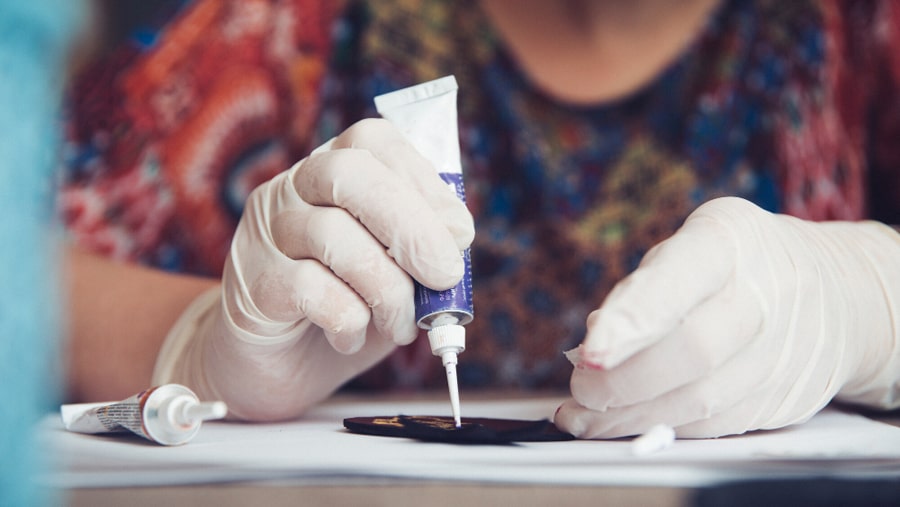
What is Cyanoacrylate Glue?
Cyanoacrylate Glue is a fast-drying adhesive that can bond and set in 30 seconds or less. Also known as super glue, this type of adhesive is found in most homes for small DIY jobs but is also used for industrial, medical, and cosmetic purposes.
Most cyanoacrylate adhesives are packaged in very small tubes that encourage you to use them sparingly. This is because you only need a very small amount of CA glue to get a very strong bond. Having such a small applicator also helps to improve application accuracy for detailed jobs.
There are dozens of different formulations of cyanoacrylate which are adapted to improve bond strength on specific substances. Some CA adhesives come in gel format which has a slower set time but makes it more flexible than regular super glue. Others are more fluid but will dry almost instantly upon contact with both surfaces.
It was first designed in 1942 but only came into production in 1958 under the name “Eastman #910“. Years later the company was sold to Loctite who is still one of the market leaders today.
What can cyanoacrylate glue be used on? Cyanoacrylate can be used on metal, wood, rubber, ceramic, glass, tile, concrete, PVC, fiberglass, fabric, leather, paper, and most plastics. It will work best on porous substances and may struggle to bond on greasy nonporous surfaces.
- USES: Glass, wood, metal, ceramic, plastic, tile, aluminum, fabric, fiberglass, vinyl, leather, concrete, brick, granite, stone
- IDEAL FOR: Small DIY tasks, multi-purpose, model building, glass repairs, precision application
- SET TIME: 30 seconds
- CURE TIME: 24 hours
- TENSILE STRENGTH: 4,000 psi
- TEMPERATURE RANGE: -55 to +250°C (-55 to +482°F)
back to menu ↑
Rubber Cement
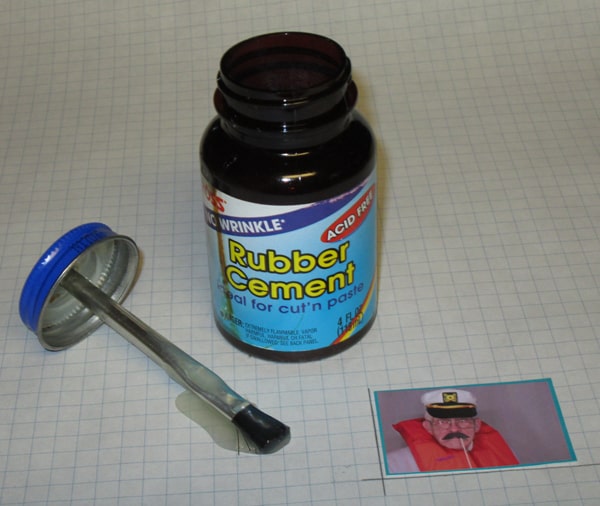
What is Rubber cement?
Rubber Cement is a fast-acting adhesive that is ideal for scrapbooking and other crafts but is also used for most inflatable repairs. The main value for crafters is that they won’t wrinkle or damage delicate materials like old newspaper clippings and photographs. It works well with inflatable repairs because it remains flexible when dry.
Also known as Contact Cement, It is made from elastomer polymers like solid rubber that is dissolved in a solvent like a heptane or acetone. It dries once it has been applied to a surface and the solvent can evaporate. The final product is a gentle glue you can peel off after setting and roll between your fingers like putty.
Its main uses are in the craft industry where temporary fixing is required and it is important not to damage the surface being glued. Today’s formulas are acid-free and so will not damage or leave glue residues behind on photographs and paper. Drying quickly and setting clearly are two properties that make it useful for crafters.
What can rubber cement be used on? Contact or Rubber cement can be used on most materials but is only really useful for crafts and inflatable repairs. Paper, card, and photographs are what most people use them on. You will also find contact cement in many tire puncture repair kits and inflatable repair kits.
back to menu ↑
Silicone Adhesive
![]()
What is Silicone Adhesive?
Silicone Adhesive is typically used as a liquid sealant that remains flexible and stable in extreme temperatures. It has strong binding properties and is incredibly durable under pressure but isn’t suitable for weight-bearing joints.
Silicone glue is especially useful for sealing worktops, sinks, and bathtubs to walls and any other areas where water may splash. It is also frequently used with glass because of its ability to absorb shock and stick to nonporous surfaces. In fact, most of your windows will be sealed with silicone adhesive.
Because of its main industrial usage, it is packaged in large tubes which can be operated with a caulk gun. You won’t often see it used in crafts or intricate projects but because of its amazing weatherproof protection, outdoors people love it. It is perfect for fixing waterproof seals and fixtures on all kinds of objects.
What can silicone adhesive be used on? You can use silicone sealants on most materials but you will get the best bond with clean surfaces like metal, glass, plastic, and ceramics. Its heat and cold resistance make it perfect for waterproofing fixings and for multi-purpose outdoor use.
- USES: Glass, wood, metal, ceramic, plastic, concrete, brick, granite, plaster, tile
- IDEAL FOR: Furniture, sealing, repairs, downward joints, shock absorption, waterproofing
- CURE TIME: 24 – 72 hours
- TENSILE STRENGTH: 200–1,500 psi
- TEMPERATURE RANGE: −55°C to 300°C (−70 to 570°F)
back to menu ↑
Polyvinyl Acetate (PVA)
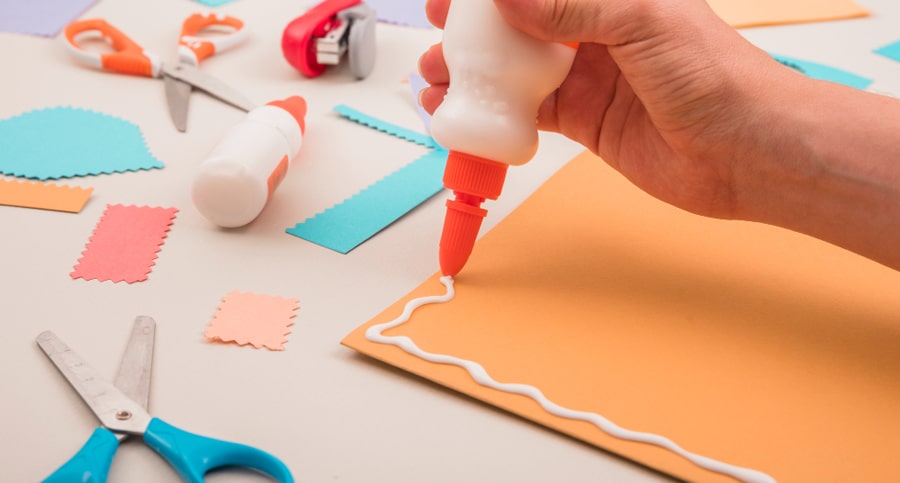
What is Polyvinyl Acetate?
Polyvinyl Acetate, or PVA as it is commonly known, is a rubbery synthetic polymer adhesive and type of thermoplastic. It is the most popular synthetic wood glue for joiners and carpenters as well as being the most common household glue for crafts.
There are two types of PVA glue: wood glue which has a yellow color and polyvinyl acetate which sets clear. Both create permanent bonds that are firm and flexible but are not very resistant to water due to their soluble nature.
There are many names you may have heard for PVA glue including, white glue, school glue, or carpenters glue. It is a common wood glue used in joinery for its fast drying time and strong adhesive bond. Perfect for holding two pieces of timber together while you join them or for adding additional strength to a wood joint.
What can PVA glue be used on? Polyvinyl acetate (PVA) can be used on just about any material including wood, metal, paper, book bindings, wallpaper, vinyl, and leather. It makes an excellent holding adhesive to keep things in place before you fit a more permanent fixing.
back to menu ↑
Solvent Cement

What is Solvent Cement?
Known as PVC cement, this adhesive is used to join two pieces of PVC together using solvents and resin. Instead of sitting on the surface or being absorbed into porous materials, solvent cement creates a weld that fuses the surface layers together.
When applied to PVC or ABS, the liquid solvent Methyl Ethyl Ketone will partially break down the surface layer of plastic. The dissolved PVC will then be replaced by the PVC resin within the glue to form a strong chemical bond. The solvent evaporates, the adhesive dries, and the PVC will be fused together.
Solvent Cement has also been adapted to use on UPVC and CPVC which have better heat resistance and rigidity than regular PVC cement. Often used by plumbers, solvent cement used on drinking water pipes should be approved for that purpose.
What can solvent cement be used on? Solvent cement is typically designed for use with a particular type of plastic, most common variations of PVC or ABS.
back to menu ↑
Spray Adhesive
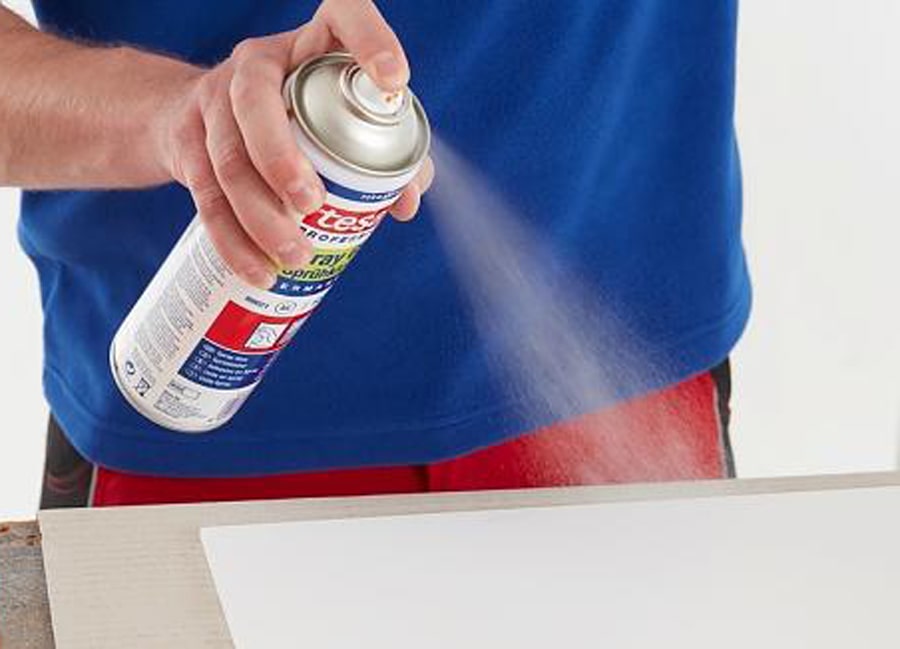
What is Spray Adhesive?
Spray Adhesive is a fairly general term for the many different types of glue that have been pressurized for easy application. Spray glues are used to cover large areas with a thin layer of adhesive without the need to apply it manually.
Spray adhesive is often used for crafts, upholstery fitting, decorations, mounting artwork, and DIY jobs around the house. Unlike many glue types, Spray glue creates a mist that settles on the surface to provide very even coverage.
What can spray adhesives be used on? Spray adhesives can be used on wood, metal, plastic acrylic, foam, fabric, paper, leather, glass, rubber, and many other materials. They are fairly inaccurate when trying to focus on a small area so be sure to cover any places you don’t want glue getting.
back to menu ↑
UV Adhesive

- USES: Glass, wood, metal, ceramic, plastic, tile, aluminum, elastic, fiberglass, vinyl, leather
- IDEAL FOR: Glass repairs, decorative glass art, precision fixings, electrical devices
- CURE TIME: 3-30 seconds using UV light
- TENSILE STRENGTH: 1,000 – 3,000 psi
- TEMPERATURE RANGE: –62°C to 177°C (–80 to 350°F)
UV adhesive is activated with UV light which has a very fast setting time once exposed.
Which Type of Adhesive Should I Use?
So now that you have a good understanding of the different types of adhesive you should be able to pick the correct glue for your project. If not, here is a quick guide to choosing the right type of glue:
- Wood – PVA Glue or Wood Glue
- Metal – Epoxy Resin
- Glass – Silicone Adhesive
- Plastic – Polyurethane Glue
- Paper – Rubber Cement or PVA Glue
- Card – Spray Adhesive
- Leather – PVA glue
- Rubber – Rubber Cement
- PVC – Solvent Cement
- Ceramic – Silicone Adhesive
We will be adding more types of glue to this list as we test them so be sure to come back soon


